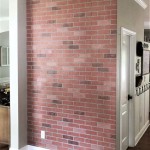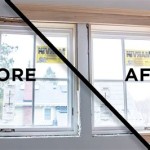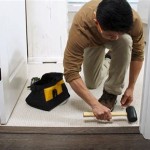How To Seal Interior Cinder Block Walls
Cinder block walls, a common feature in basements and garages, provide a durable and economical building material. However, they can be porous, allowing moisture, dust, and even odors to permeate the interior space. Sealing these walls effectively can significantly improve the comfort, aesthetics, and overall air quality of your home. This article outlines the essential steps for sealing interior cinder block walls, ensuring a long-lasting and efficient finish.
Prepare the Walls
Before applying any sealant, proper preparation is crucial to achieve optimal results. This involves removing loose debris, dust, and any existing coatings with a stiff-bristled brush or a vacuum cleaner with a brush attachment. Next, inspect the walls for cracks or gaps. These can be filled with a patching compound, cement-based mortar, or a specially formulated crack filler, depending on the severity and nature of the damage. Ensure the patching material is compatible with the sealant you intend to use. Allow the patching compound to dry completely before proceeding to the next step.
Choose the Right Sealant
The selection of the appropriate sealant depends on the specific requirements and desired outcome. Consider factors like moisture resistance, vapor permeability, and the aesthetic appearance. Some common sealant options for interior cinder block walls include:
- Acrylic Sealant: This type offers good adhesion and moisture resistance, making it suitable for general sealing purposes. It is available in a variety of colors and is relatively easy to apply.
- Epoxy Sealant: Known for its exceptional durability and water resistance, epoxy sealant is ideal for high-moisture areas or where a strong, long-lasting seal is required. It is often used for sealing cracks in concrete and masonry.
- Silicone Sealant: This sealant is flexible, making it suitable for areas prone to movement, such as expansion joints. It is also highly resistant to mildew and mold growth.
- Latex-Based Sealant: A more budget-friendly option, latex-based sealant provides good adhesion and moisture resistance. However, it may not be as durable as other choices.
Consult with a building materials specialist or a professional contractor for personalized advice on the most suitable sealant for your specific project.
Apply the Sealant
Once the walls are prepared and the appropriate sealant chosen, apply the sealant using a caulking gun or a brush, depending on the chosen product. For caulking guns, cut the sealant tube at a 45-degree angle to ensure a smooth, consistent bead. Hold the gun at a 45-degree angle and apply the sealant in a continuous, even line. Use a damp cloth or a sealant tool to smooth out the sealant and remove any excess material. If using a brush, apply the sealant in thin, even coats. Allow the sealant to dry completely according to the manufacturer's instructions before applying a second coat, if necessary.
Additional Tips
To enhance the effectiveness and longevity of the sealant, consider the following tips:
- Ventilation: Adequate ventilation is essential, particularly during the drying process. Open windows or use fans to ensure proper air circulation, preventing moisture buildup and promoting faster drying.
- Temperature and Humidity: Apply the sealant under optimal temperature and humidity conditions. Generally, sealant performs best in moderate temperatures (between 50°F and 90°F) and low humidity. Avoid applying sealant in direct sunlight or when the temperature is below freezing.
- Regular Maintenance: While a properly applied sealant can provide long-term protection, regular inspections and maintenance are crucial. Check for any signs of wear or damage, and reapply sealant as needed to maintain the integrity of the seal.
Sealing interior cinder block walls effectively requires meticulous preparation, the use of appropriate sealants, and proper application techniques. By following these guidelines, you can create a comfortable, clean, and visually appealing space for your home.

11 Concrete Block Waterproofing Tips Polyguard

How To Seal Dustproof An Exposed Internal Brick Or Masonry Wall Floorseal

Waterproofing Basement Walls Dos And Don Ts To Remember Bob Vila

Waterproofing A Basement And Getting Rid Of Mold Mildew Is No Easy Feat

Painting Cinder Block Walls In A Basement Or Re Paint Them

Poured Concrete Walls For Better Basements

Love Exposed Brick Me Too Here S How To Keep It Looking Good

What Is The Best And Est Way To Cover Interior Cinder Block Walls Plaster Joint Compound Or Something Else Quora

How To Seal Dustproof An Exposed Internal Brick Or Masonry Wall Floorseal

Interior Brick Sealer Dustproofer Prosoco
Related Posts








